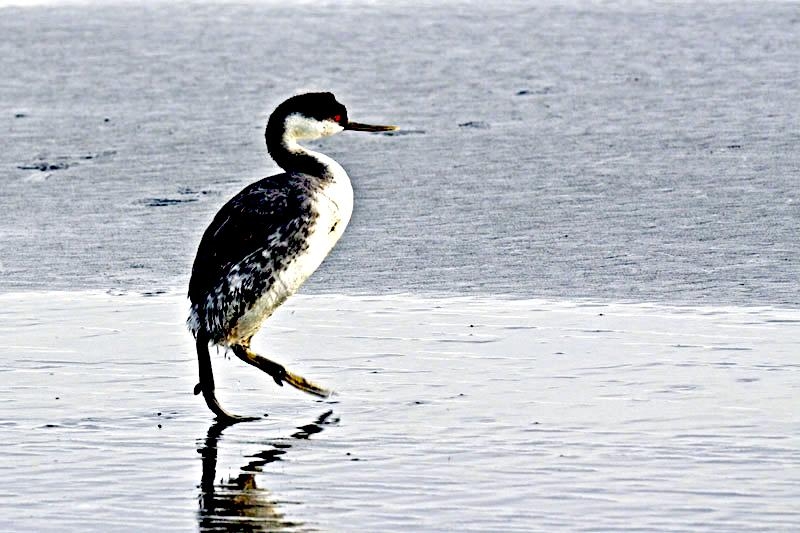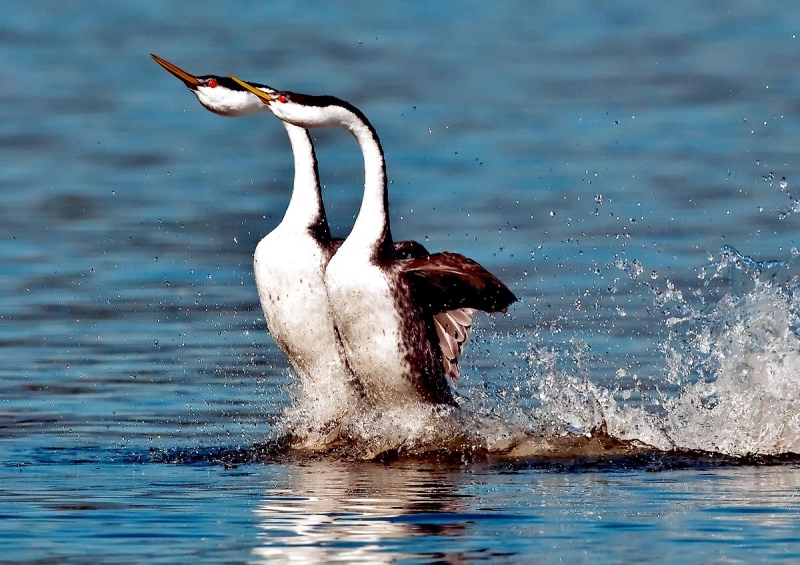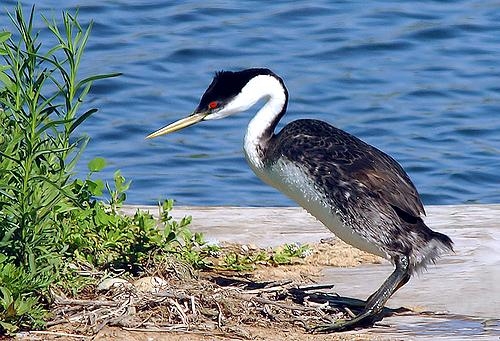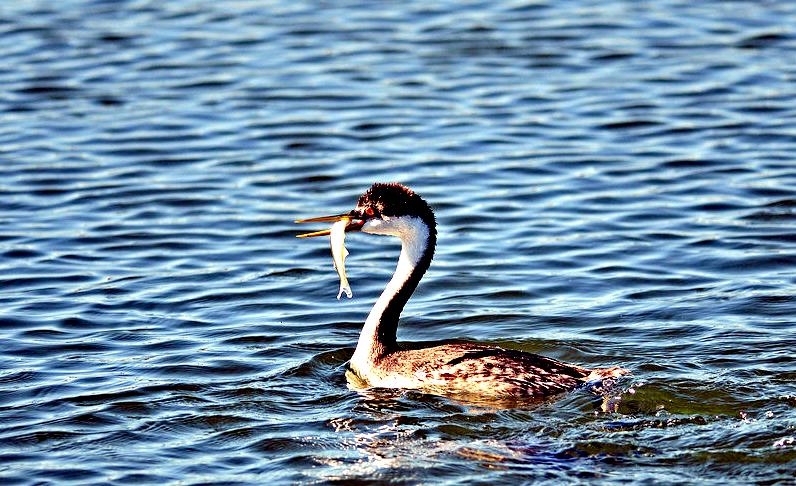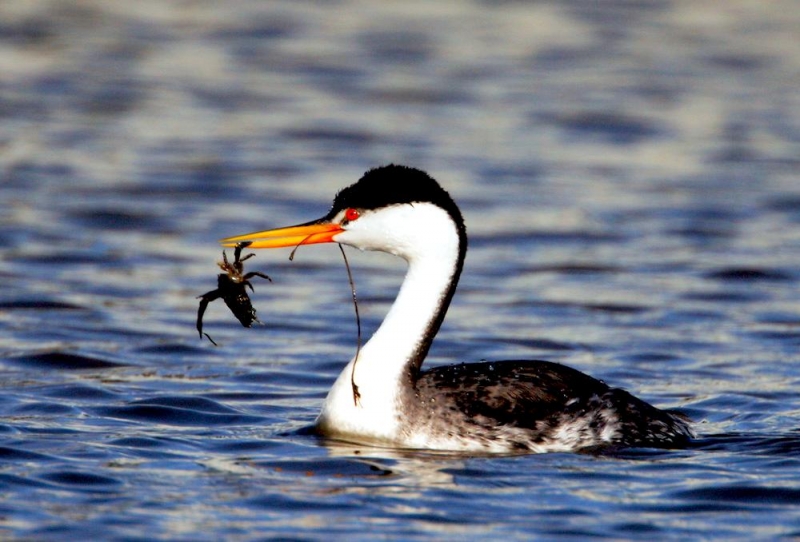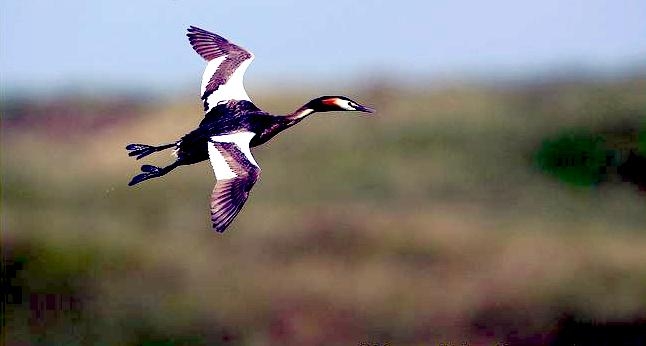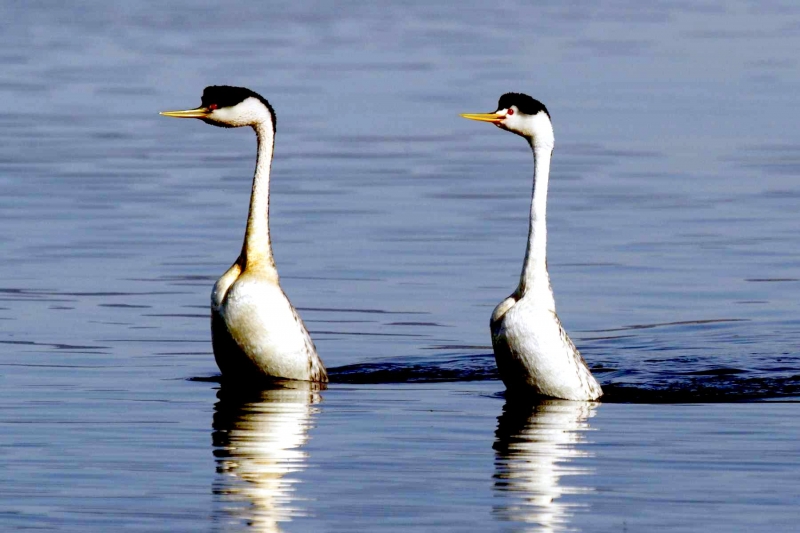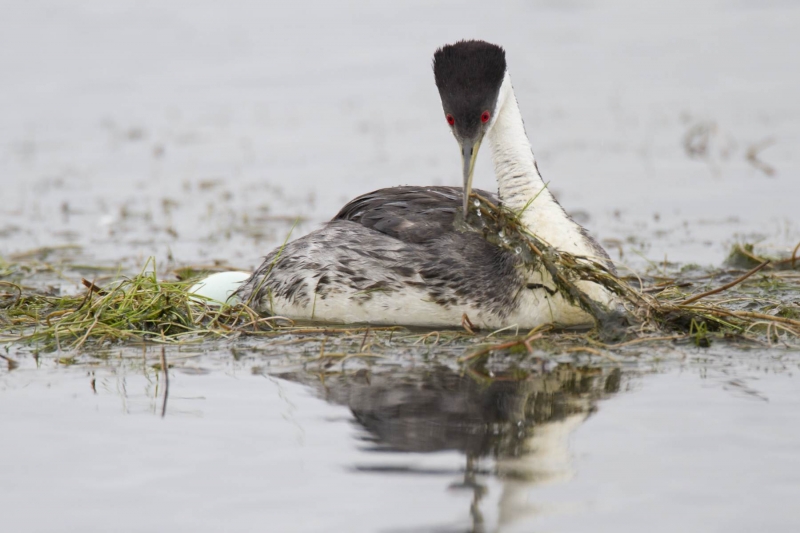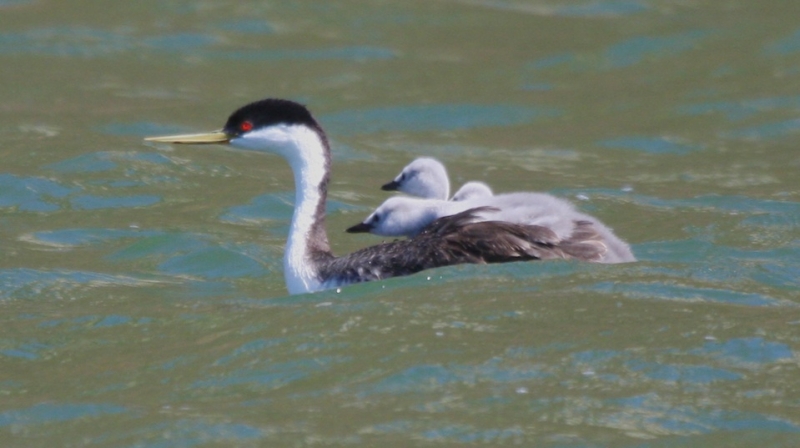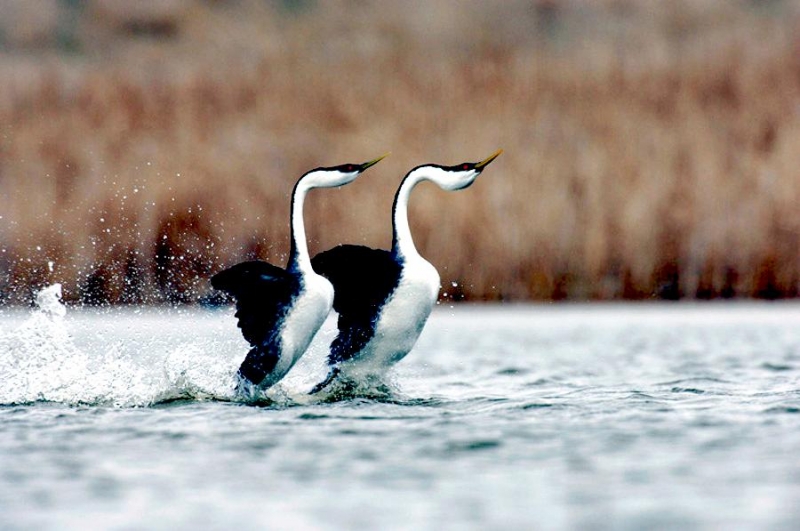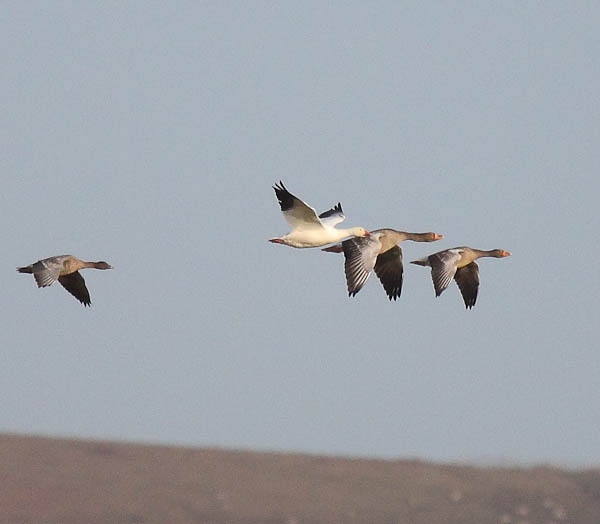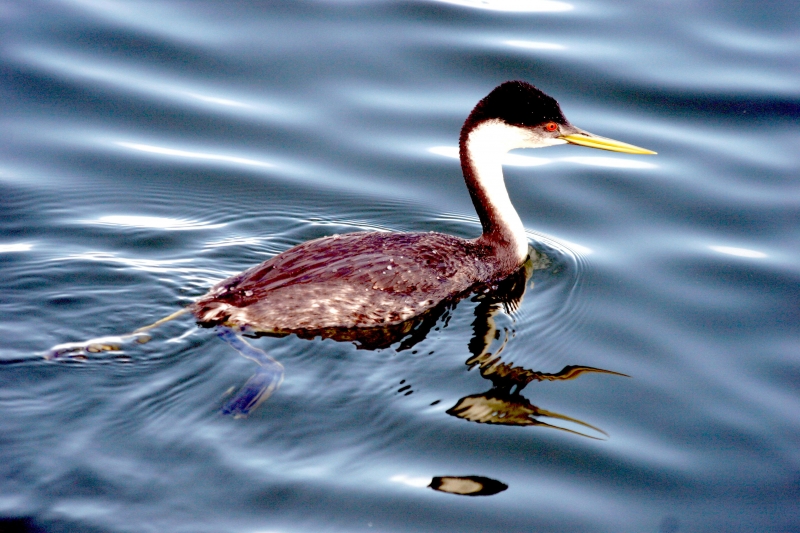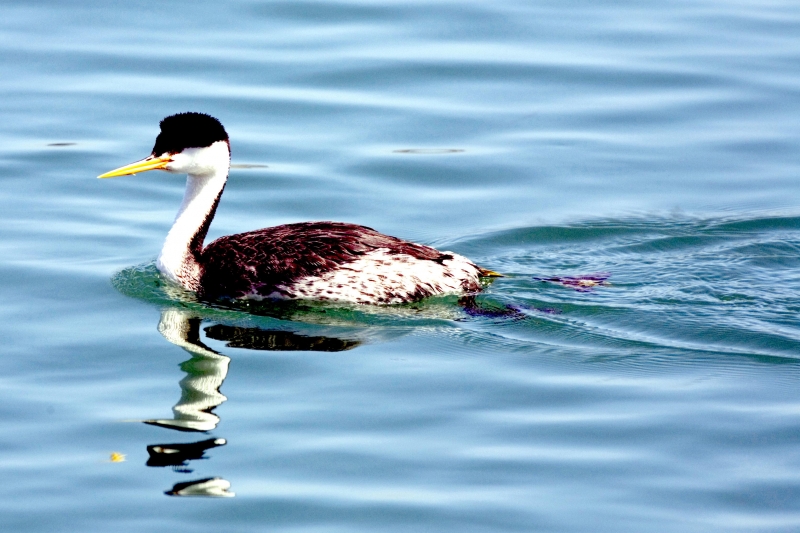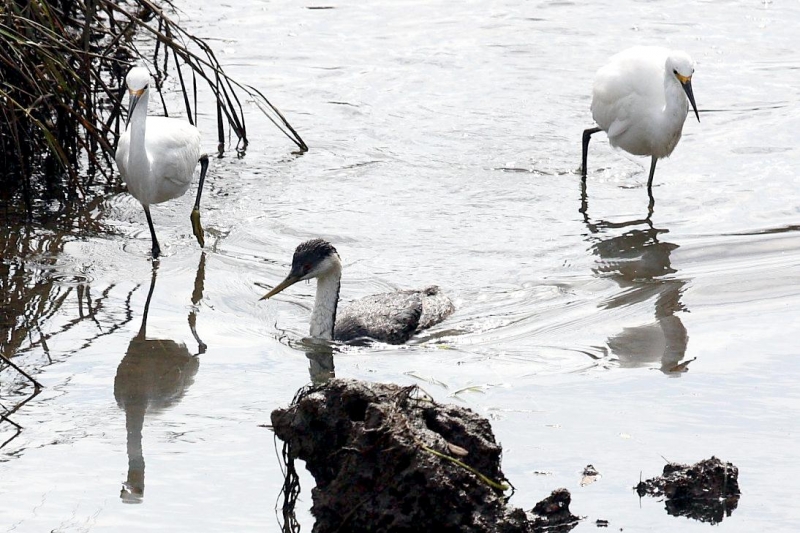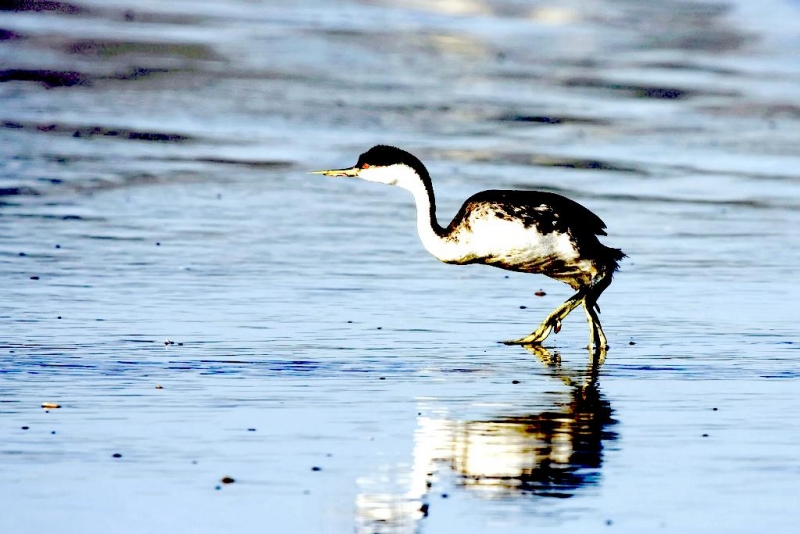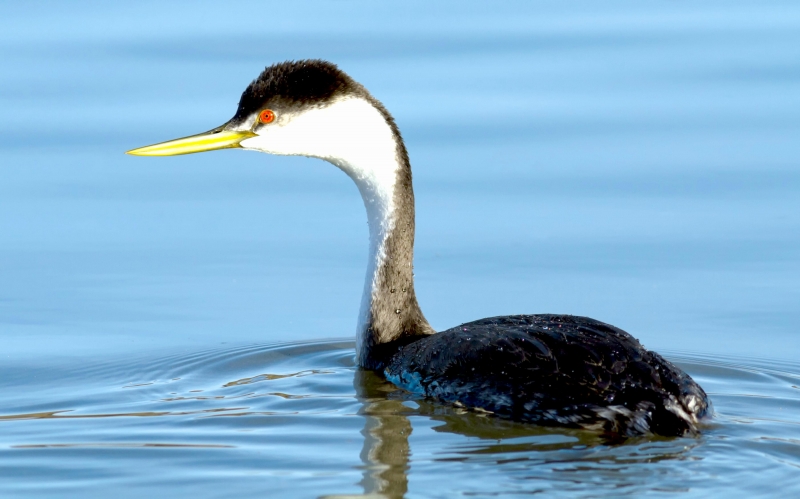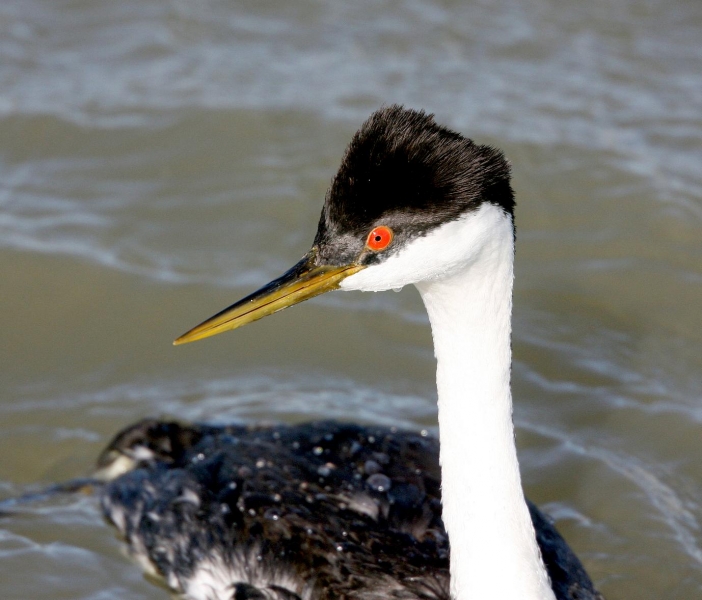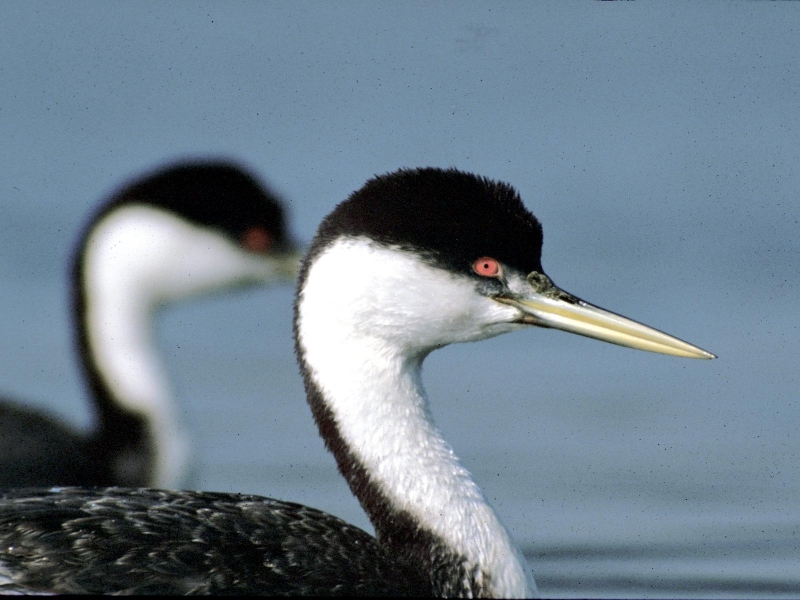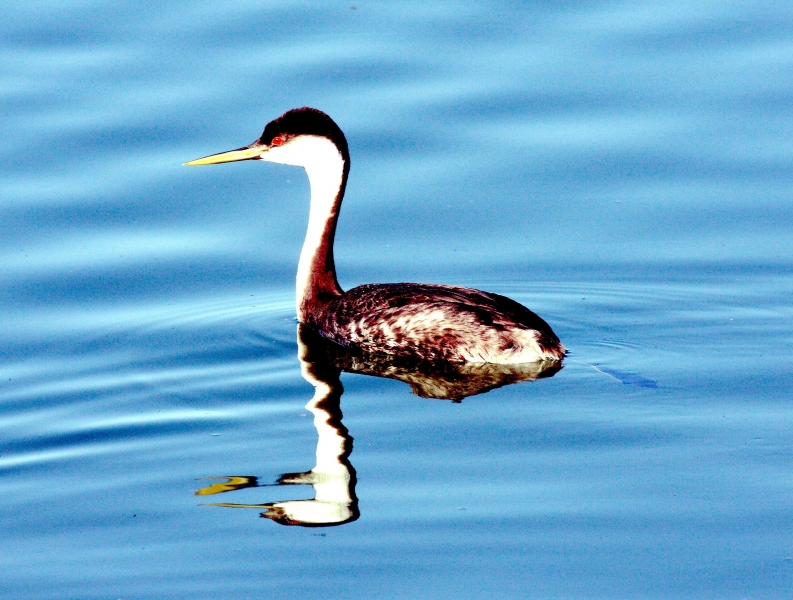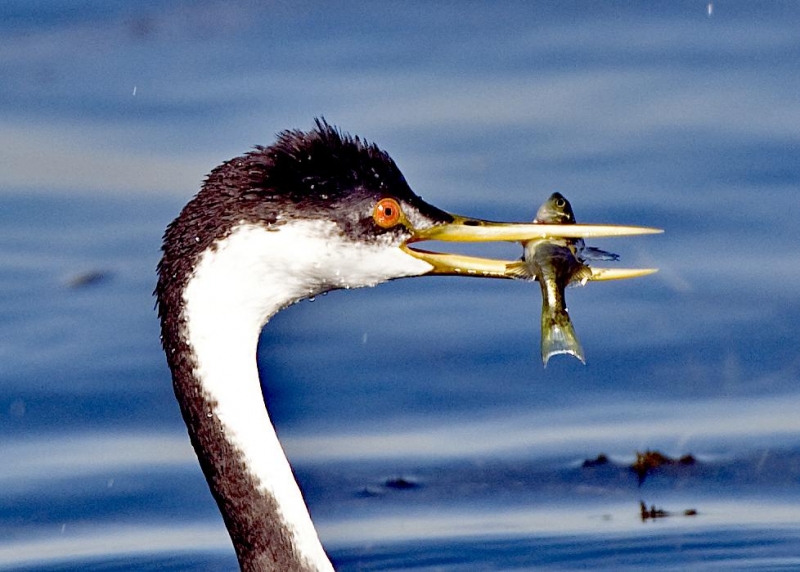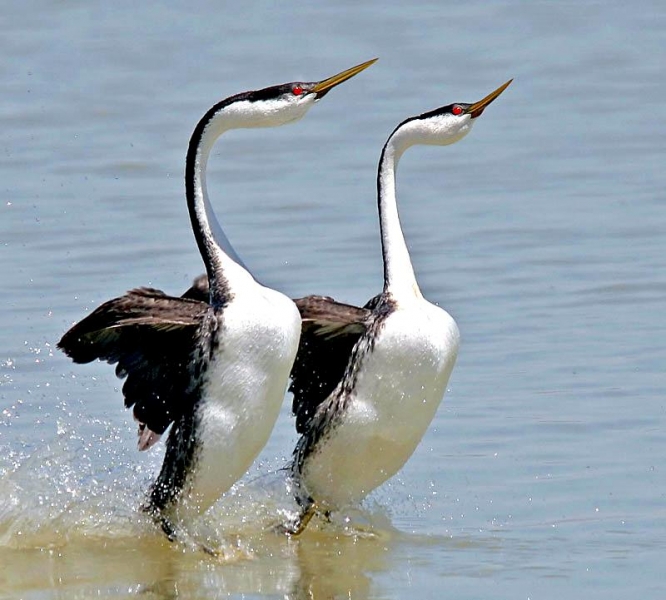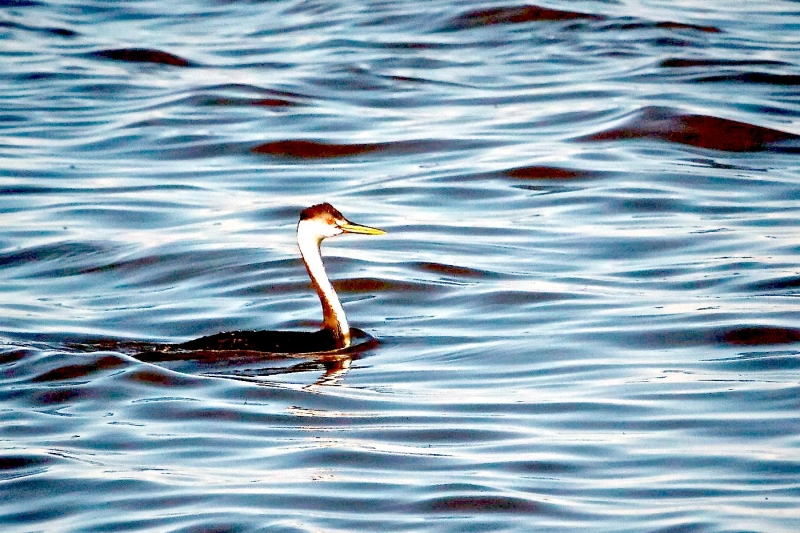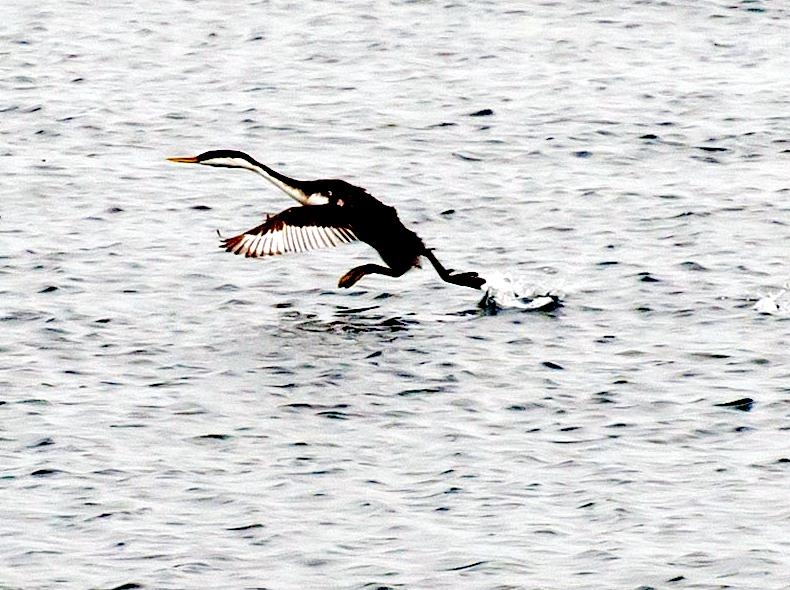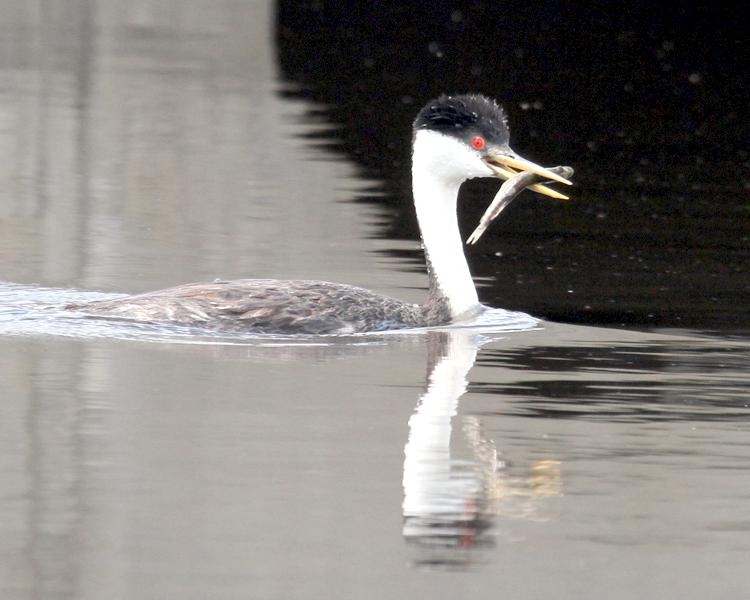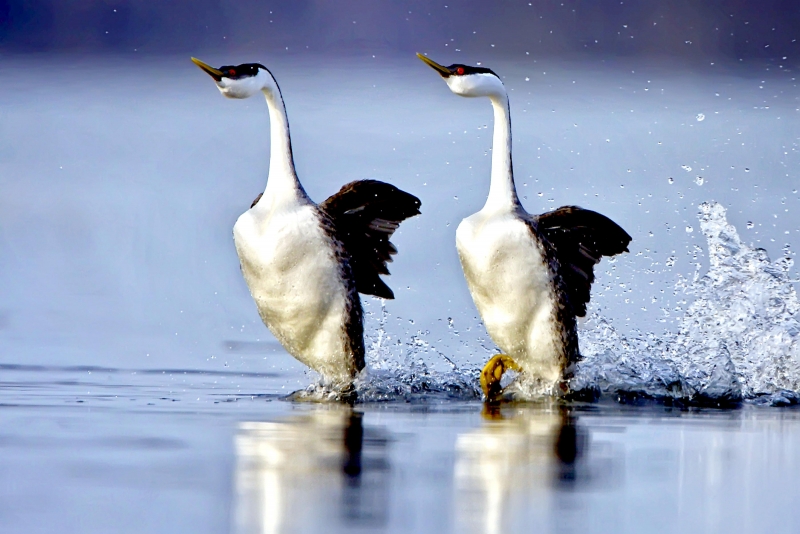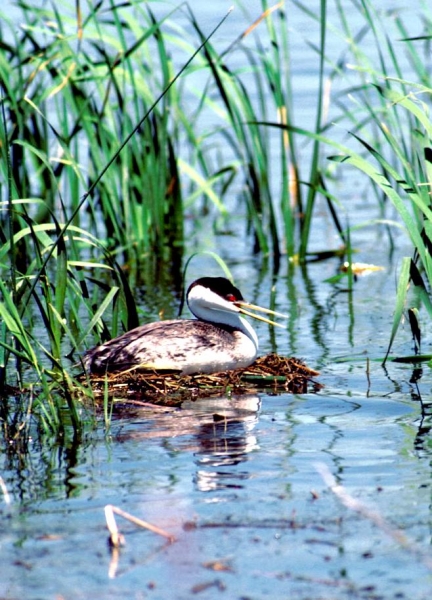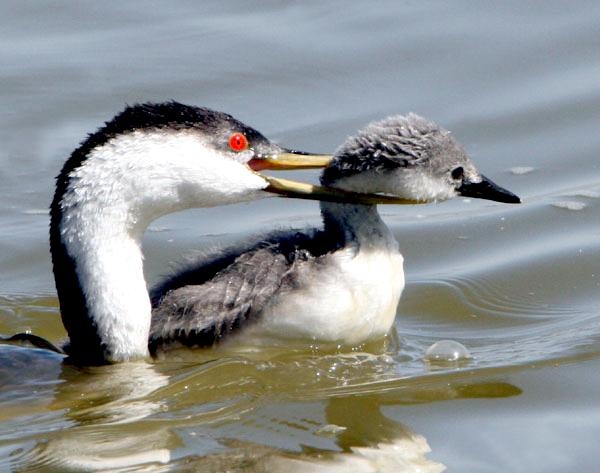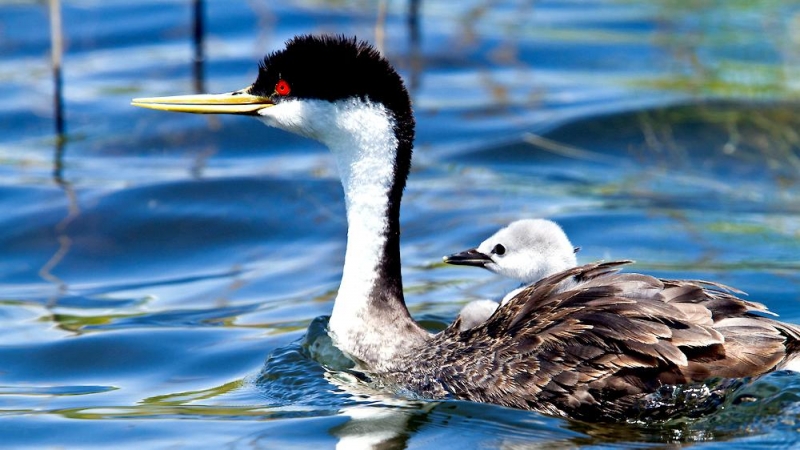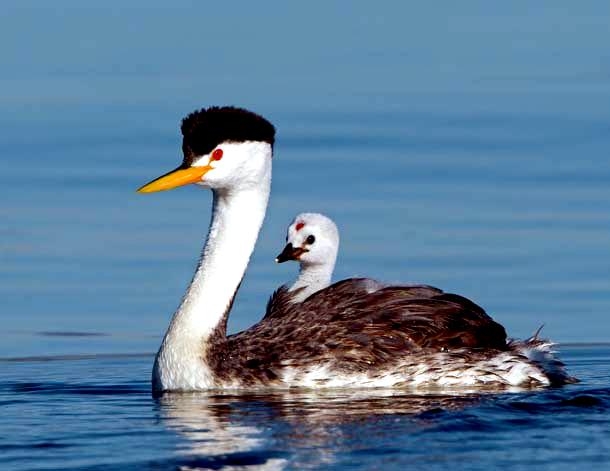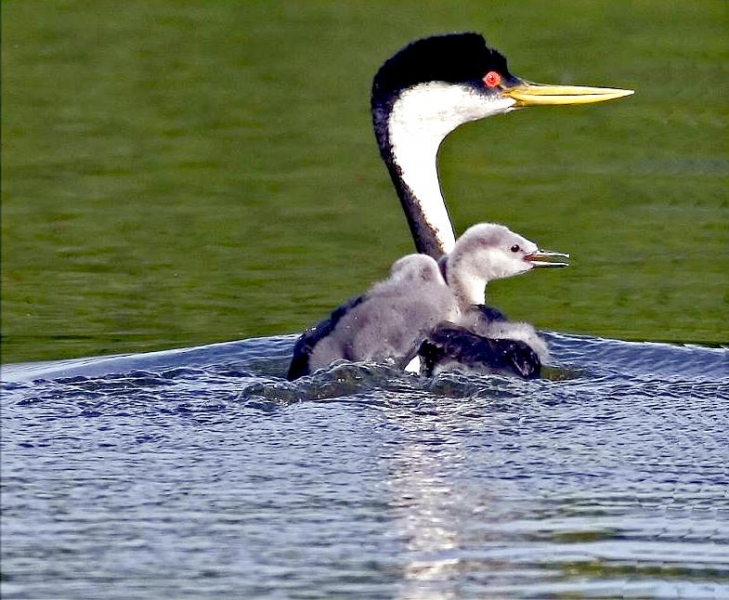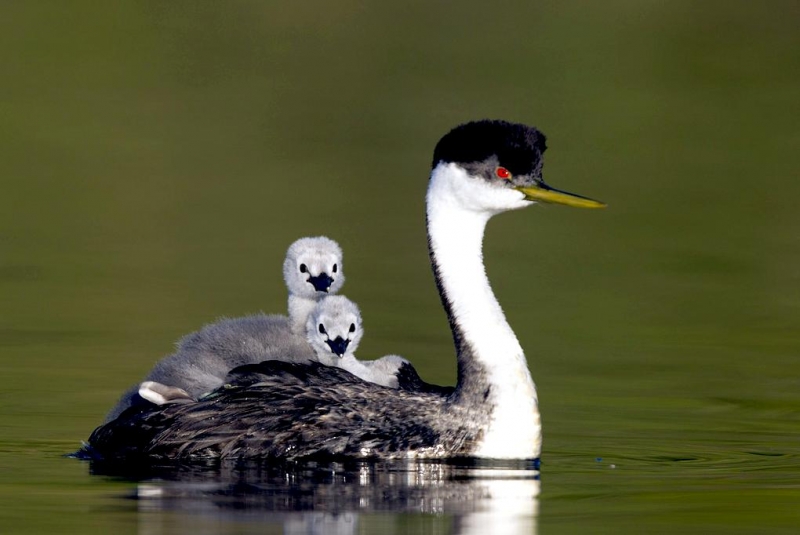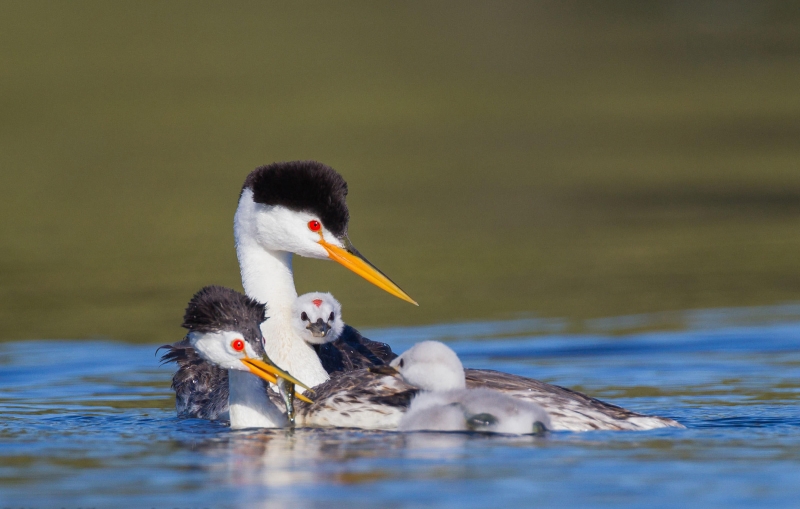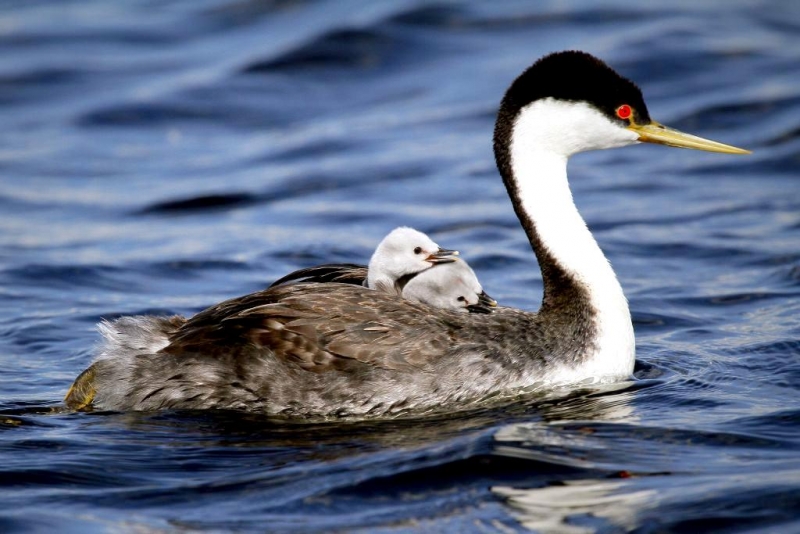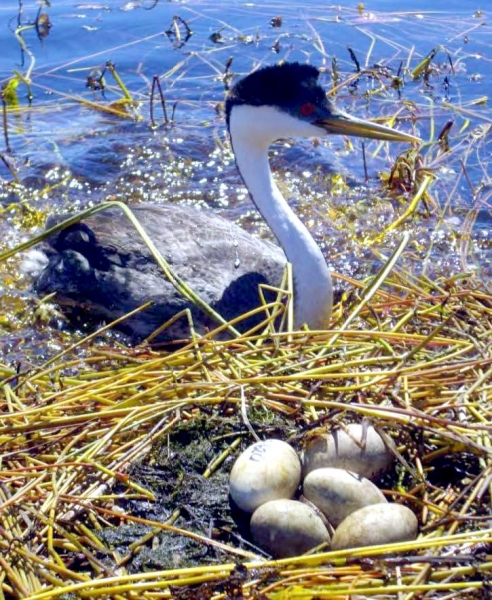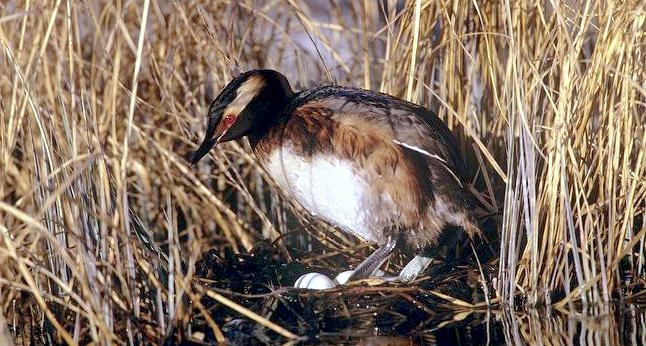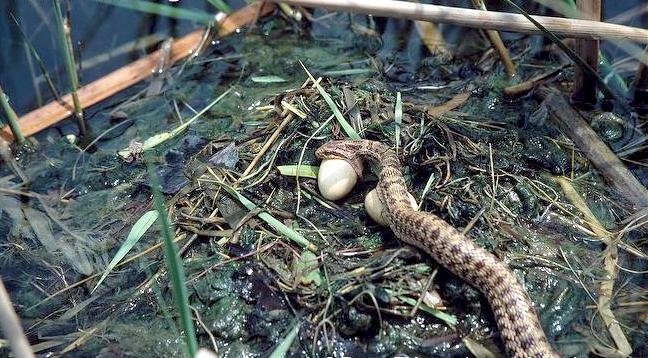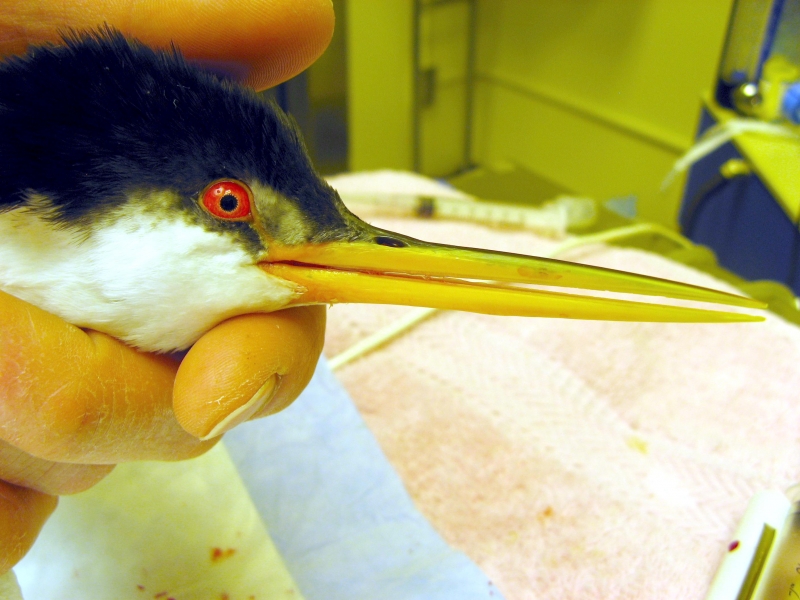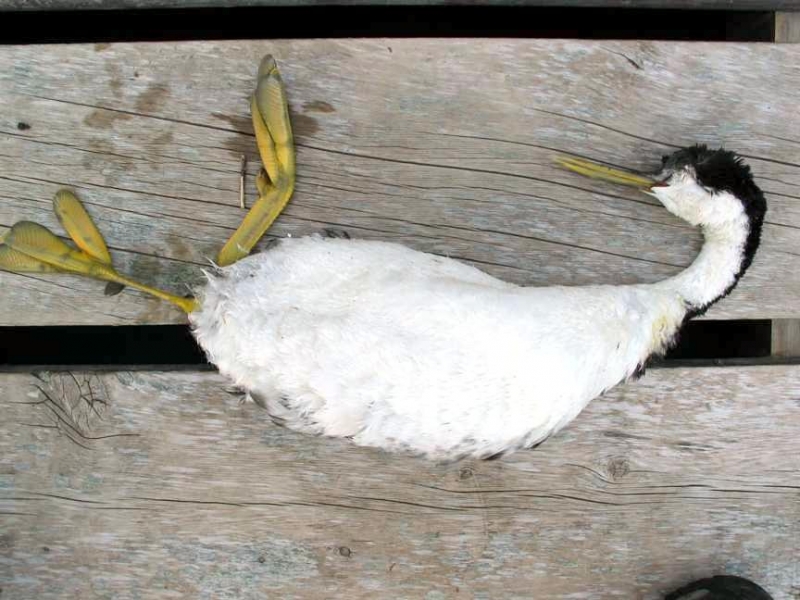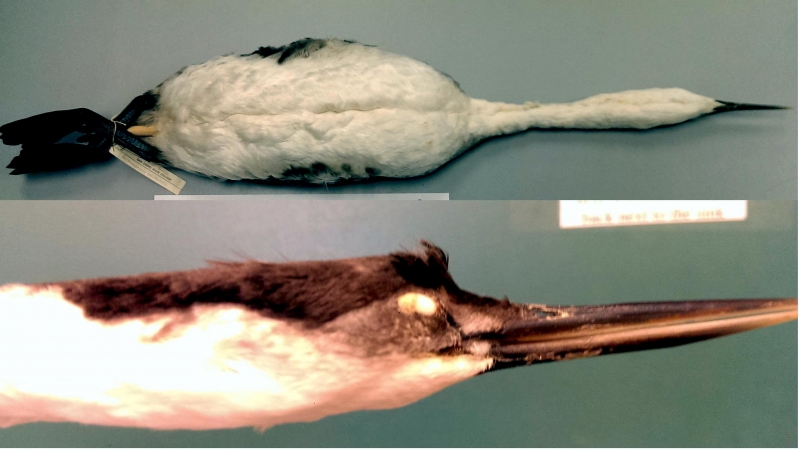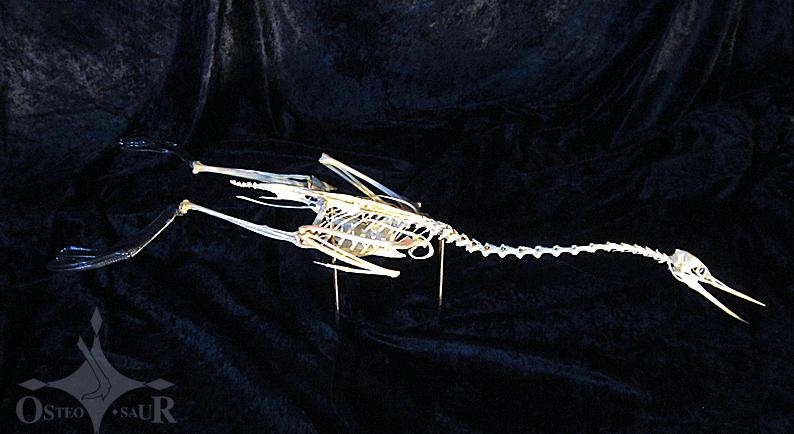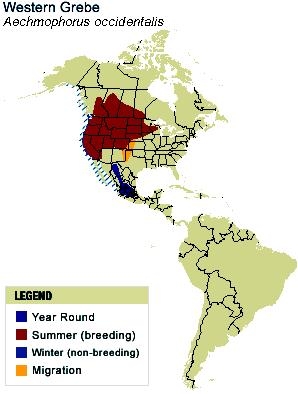“Aechmophorus occidentalis”
The large & elegant Western Grebe breeds in lakes, ponds & coastal regions across the American West and winters primarily off the Pacific Coast. The Western Grebe is commonly found from Canada through California and sometimes in Mexico. In the winter, the Western Grebe lives on the Pacific Ocean coast. They have a dramatic, choreographed courtship display, in which the birds rush across the water with their long necks extended. Western Grebes breed on freshwater lakes & marshes with extensive open water bordered by emergent vegetation. During winter, they move to saltwater or brackish bays, estuaries, or sheltered sea coasts and are less frequently found on freshwater lakes or rivers. Western Grebes eat mainly fish, catching them by diving in open water. They either spear prey or capture it with a forceps-like motion of the bill, taking larger prey items to the surface before swallowing. They also occasionally consume bottom-dwelling crustaceans & worms (polychaetes). The nest looks like a solid mound with a shallow depression for the eggs. It’s built of plant materials from the bottom up, on a submerged snag or floating in up to 10 feet of water and anchored to emergent or floating plants. Rarely the nest is built on land using small amounts of surrounding vegetation. The nest is most often built on floating vegetation hidden among emergent plants; Western Grebes occasionally nest in the open and rarely on land. Both sexes build the nest using material brought from underwater, found floating on the surface or growing near the nest. Western Grebes often nest in colonies, with hundreds or even thousands on one lake or on a sheltered ocean coastal region.
The Western Grebe like other grebes, spends almost all its time in water and is very awkward when on land. The legs are so far back on the body that walking is very difficult. Western Grebes are adept swimmers & divers. The mating display of the Western Grebe is among the most complicated of all. During the ‘weed dance’, the male & female both raise their chest gently out of the water and then rub each other with water plants in their long bills. Then comes the ‘rushing’ phase when the birds look at each other before exploding into a sprint across the water’s surface. Each Grebe stands high, with its wings held back and its cobra-like head and neck rigid. The race ends with the pair diving head first into the water. Courtship happens entirely in the water including a well-known display known as “rushing,” where 2 birds turn to one side, lunge forward in synchronize, their bodies completely out of the water and race across the water side by side with their necks curved gracefully forward. During the breeding season, both the male and female Western Grebe will assisting in building a nest that floats and is constructed from plant materials that are anchored to plants emerging above the shallow water. The female will lay 3 or 4 eggs and both parents will take care of the eggs during the incubation period. The incubation period for the Western Grebe is 23 to 24 days. The eggs are a blue-white in color and the male & female both feed the chicks after they have hatched. Populations may be declining, although at least 80,000 Western Grebes breed in North America. Around 1900, Western Grebes were extensively hunted for their silky white breast & belly feathers, which were used in clothing & hats. This aquatic species is also sensitive to pesticides, to other causes of poor water quality and entanglement in fishing line. Western Grebes nest in colonies and can be flushed by boaters that approach too closely, leaving their nests vulnerable to gulls and other predators. On their coastal wintering grounds, they are vulnerable to oil spills and are caught in gill nets.









